How Do I Block Noise On A Shared Wall?
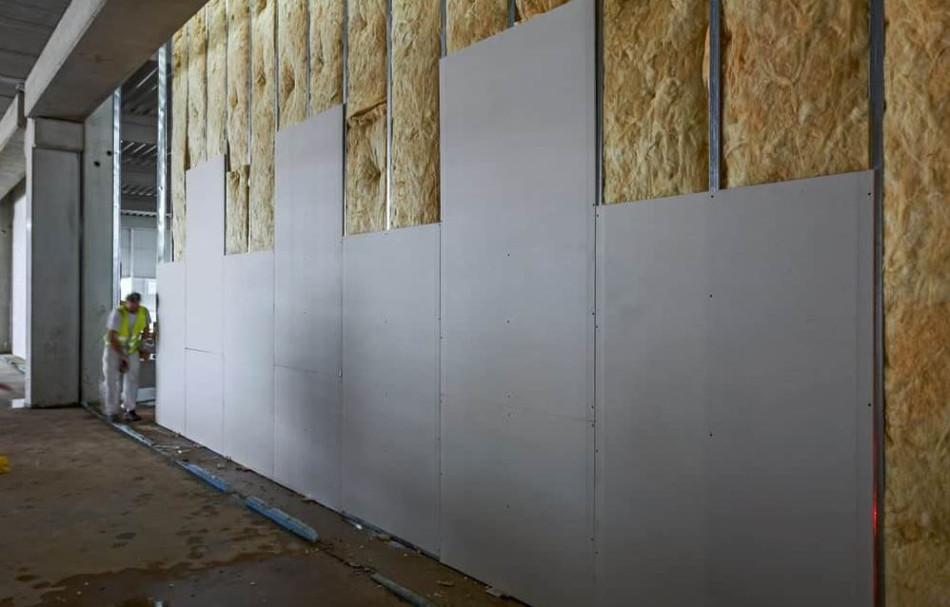
Noise from a shared wall can be a major annoyance, especially if you live in a building or apartment with loud neighbors. It can disrupt your sleep, work, and overall quality of life. Fortunately, this problem can be solved. There are several effective ways to block noise on a shared wall.
However, some methods work better than others. In this article, we’ll explore the ones you can use to block noise on a shared wall, including the pros and cons of each option. So, let’s start!
So How Do I Block Noise On A Shared Wall? Using acoustic insulation between stud frames will absorb and block sounds transfered through the shared wall. Check for gaps or cracks, add drywall, use soundproofing mats, and install soundproof curtains. Lastly, you can also try to consider soundproofing your floor.
Having a shared wall with a neighbor can be disturbing and interfere with your lifestyle. But even that problem can be solved because you can block or reduce the noise in several ways. From adding insulation to installing soundproof panels, many solutions can help reduce sound transmission. We will explain this in more detail below.
How Much Soundproofing Should You Do?
It’s important to consider how much noise you’re making when deciding how to soundproof and block noise on a shared wall. Some solutions might be too expensive for your needs.
For example, if you’re going to play drums in your home, you’ll need to soundproof your home very well. Especially if it is a shared wall. But if you just want to ensure that your neighbors can’t hear what you are watching on TV, you won’t need as much soundproofing. That’s why choosing the right level of soundproofing for your shared wall is important.
Related Article: How To Block Air Conditioner Noise? Explained
It is also important to consider whether you want a permanent or temporary solution for soundproofing. Before making any changes, check with your landlord if you are living in a rented apartment or home. This way, you’ll know if you’re allowed to make permanent changes or if you need to choose temporary options.
1. Drywall
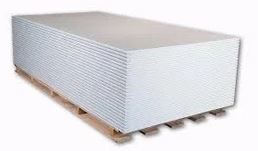
Building an extra wall inside your current one is the way to go if you want to block a noise on a shared wall. But if you live in a condo, this might not be possible. Instead, you can add some thickness to your walls by installing drywall. Condo walls are usually very thin, and adding drywall will surely reduce the noise that travels through them. You’ll notice a significant drop in sound after you install drywall on all your apartment walls.
One way to make your drywall even more effective in reducing noise is by using a technique called decoupling. This means creating a gap between the drywall and the existing walls in your condo. This way, it becomes harder for sound to pass through and into your space.
2. Soundproof Pads
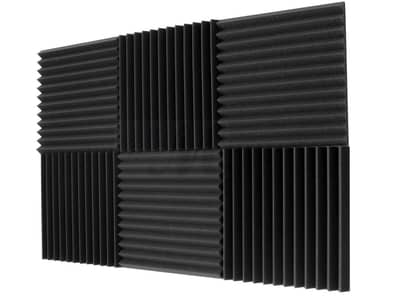
Another method that can be used to block noise on a shared wall is to use soundproof pads. This can be in the form of foam squares that are commonly used by music producers in their recording studios. By attaching these large foam panels to your walls, you can reduce the vibration and the amount of sound that travels through the walls.
If you don’t know where to buy soundproof paddings, you can still reduce the noise by using any type of padding against the walls. For instance, placing a mattress upright against the wall will also work, although it may not look attractive. But this is not the permanent solution.
However, there are a lot of products that can effectively reduce and block noise on a shared wall. Permanent solutions that can be used to block noise are acoustic panels and soundproof pads.
Related Article: How To Soundproof A Bedroom Wall Cheap? Explained
3. Soundproof Blankets
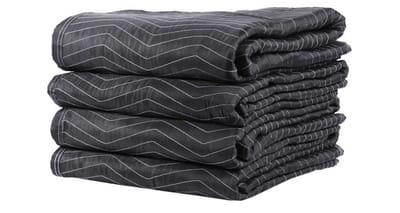
> Buy Soundproof Blankets HERE <
Soundproof blankets have very good noise absorption characteristics and can drastically reduce sound. Another advantage of soundproof blankets is their ability to prevent the sound from bouncing within the room. For this reason, many music studios use these types of blankets to reduce noise.
Although there are many soundproof blankets on the market today, you need to choose the one that best suits your needs. Our recommendation is to take a blanket that is heavy and bulky. The thicker the blanket, the better its noise-absorbing properties.
The only disadvantage of this option is that it may spoil the room’s aesthetics. Soundproofing blankets are placed on the wall and thus attract attention. When someone comes into your room and notices a big thick blanket on the wall, they will be surprised. The good thing is that they come in various colors, so you can choose the one that best suits your room.
4. Noise Barriers
Soundproofing your walls with noise barriers is the most effective method but also the most expensive. Therefore, if money is not a problem for you, this is the option you want to choose. This will block noise on a shared wall easily.
How do noise barriers work? They block the sound by creating a soundproof space, which reduces the escaping noise.
However, their installation process is not simple, and expert knowledge is required. If you have never done this, we advise you to hire a professional for this job. This is a permanent solution that will reduce noise on a shared wall.
Therefore, we recommend this if you are not a tenant and the house is yours. Another benefit is that they will not damage the walls’ aesthetics and will fit perfectly into any room on the walls.
Related Article: How Does Noise Cancelling Foam Work?
5. Soundproof Curtains
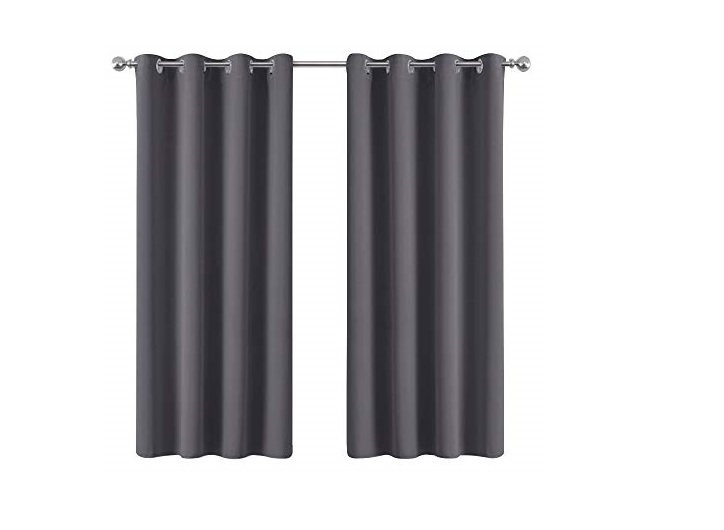
> Buy Soundproof Curtains HERE <
We should include soundproofing curtains in this list when we mentioned soundproofing blankets. Many homes and apartments use soundproofing curtains on their windows to block outside noise.
But if you have a problem with neighbors on a shared wall, we recommend you get thick and heavy curtains that you will place on the wall to block the noise that is bothering you.
This method has its advantages and disadvantages. The advantage is that it can be placed on the wall easily and quickly, and the disadvantage is that it is not the best option and can spoil the room’s look.
It is necessary to pay attention that when purchasing these curtains, take those long enough to cover as much of the wall surface as possible. That way, you will get better soundproofing properties.
6. Soundproof Carpets

> Buy Soundproof Carpets HERE <
Finally, you can use carpets to soundproof your room. However, they are not placed on the wall but on the floor. The carpet will be the right option if you have loud neighbors and the noise comes from below. In buildings that are poorly insulated, this could be very useful. Especially if you have wooden floors, problems with sound waves will be present.
Look for a thick and quality carpet and place it on your floor. They will insulate the loud sound that is coming from below. Musicians also use carpets in their studios to reduce noise. Therefore, consider this as one of the options if you have problems with noisy neighbors downstairs.
Related Article: Can You Soundproof A Room That is Already Built?
Tips For Soundproofing A Shared Wall
- Acoustic Insulation: Apply this between stud frames, and you will easily absorb and block sounds that go through the wall. DFM acoustic insulation is the right material to soundproof stud walls in a home or an apartment.
- AcoustiClip: Great way to block and reduce sound and vibrations on a shared wall can be achived by using acoustic clips. These clips will enable noise attenuation.
- Acoustic Sealant: This sealant will help you soundproof your wall boarding. Use it to seal the edges of the room wall. That way, you’ll block sound from transmitting through small gaps in the wall.
- Acoustic Putty Pads: When adding and installing electrical outlets in walls, use acoustic putty pads. This way, you will get good sound insulation on the walls.
For those who want to learn more, be sure to watch this video:
Related Article: 14 Ways to Annoy Noisy Upstairs Neighbors Legally
Final Thoughts
Here’s what you need to remember about blocking noise from a shared wall. No single solution will work perfectly, but using a few of them together can help a lot. The best option is to build a thick wall between the rooms.
Another option is, if someone in your household is making noise, ask them to quiet down. And if your neighbors are making noise, don’t hesitate to ask them to quiet down. Pick what works best for you, and get started! I hope that this article has helped you, and if you have any additional questions, feel free to leave a comment below.
